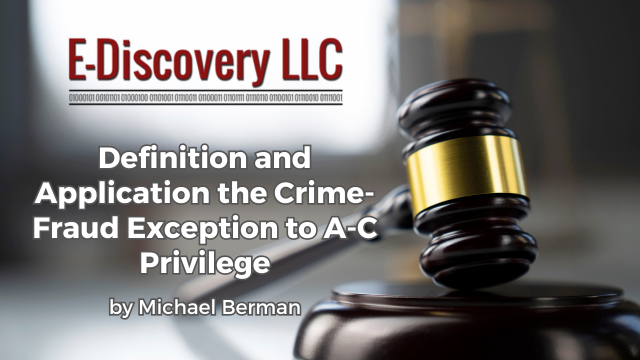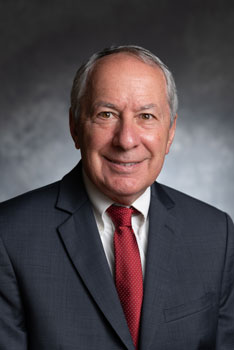
[EDRM Editor’s Note: The opinions and positions are those of Michael Berman.]
After in camera review of 46 documents, the court in Burge v. Teva Pharmaceuticals Industries, Ltd., 2025 WL 2846688 (D. Kans. Oct. 7, 2025), defined and applied the crime-fraud exception to the attorney-client privilege and required production of previously-redacted information.
Under the crime-fraud exception, communications with counsel in furtherance of a crime or fraud are not privileged. “The purpose of the crime-fraud exception is to assure that the seal of secrecy between lawyer and client does not extend to communications made for the purpose of getting advice for the commission of a fraud or crime.” Id. at *1. In summary:
“There is a privilege protecting communications between attorney and client. The privilege takes flight if the relation is abused. A client who consults an attorney for advice that will serve him [or her] in the commission of a fraud will have no help from the law. He [or she] must let the truth be told.”
Id. at n. 2 (citation omitted).
A conclusory allegation of crime or fraud is insufficient to invoke the exception. The Burge court wrote that a party seeking to invoke the exception and avoid the privilege must present prima facie evidence that the crime-fraud allegation has a factual foundation. Id. at *1. In short:
The evidence must show that the client was engaged in or was planning the criminal or fraudulent conduct when it sought the assistance of counsel and that the assistance was obtained in furtherance of the conduct or was closely related to it. The exception does not apply if the assistance is sought only to disclose past wrongdoing, but it does apply if the assistance was used to cover up and perpetuate the crime or fraud.
Id. at *1 (cleaned up).
The Burge court described the two-step process used to make that determination. Id. at 2. First, a court must determine whether in camera review is justified. Then, if justified, the reviewing court must apply a higher, but less-clear standard. Discussing Supreme Court and Tenth Circuit decisions, the Burge court noted that the “exact quantum of proof necessary” had not been articulated. Id. The Burge court looked to precedent holding that the test was “whether the subject documents were in fact probative of the alleged fraud.” Id. (citation omitted).
The Burge court had already – and without objection – completed the first step and decided that in camera review was justified. It wrote that: “Plaintiffs have provided sufficient email evidence Defendants’ attorneys were materially and significantly involved in the concealment and false or misleading representations. Specifically, Plaintiffs have provided 2012 emails showing that Teva’s internal counsel were heavily involved in the discussions intended to conceal and make false or misleading representations….” Id. at n. 16.
Plaintiffs have provided sufficient email evidence Defendants’ attorneys were materially and significantly involved in the concealment and false or misleading representations.
Id. at n. 16.
It then moved to the second step: “In this second step, the Court carefully reviewed every redaction in each of the 46 documents at issue in camera to determine whether the redacted portions should be disclosed under the crime-fraud exception.” Id. at *3. The court had previously found “an affirmative act of concealment” by Defendants. Id. It therefore now focused on “whether the redacted communications between Defendants and their attorneys are probative of these specific allegations of active and intentional fraudulent concealment by Defendants with the participation of their attorneys.” Id. at *3.
All 46 documents were partially redacted email chains. The court wrote: “After reviewing in camera the challenged redactions for each email chain, the Court finds some, but not all, of the redacted communications between Defendants and their attorneys to be probative of the specific allegations of active and intentional fraudulent concealment by Defendants with the participation of their attorneys. The Court also finds one redacted document is a communication predominantly for a business purpose.” Id. at *4.
Production was ordered under the crime-fraud exception.
In a prior decision, the Burge court discussed the crime, fraud, “or tort” exception. Burge v. Teva Pharm. Indus., Ltd., 2025 WL 2172466, at *6 (D. Kan. July 31, 2025), on reconsideration, 2025 WL 2592167 (D. Kan. Sept. 8, 2025). In note 70, it cited precedent that torts could support the exception.
“[S]ome courts have extended the crime-fraud exception beyond crimes and frauds to torts and ethical violations….” Monco v. Zoltec Corp., 2018 WL 11195522, at *2 (N.D. Ill. Sept. 28, 2018)(declining extension).
Assisted by GAI and LLM Technologies per EDRM GAI and LLM Policy.


